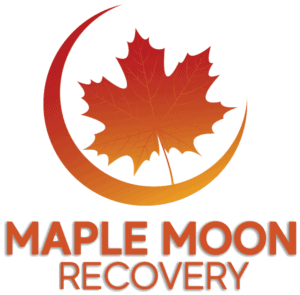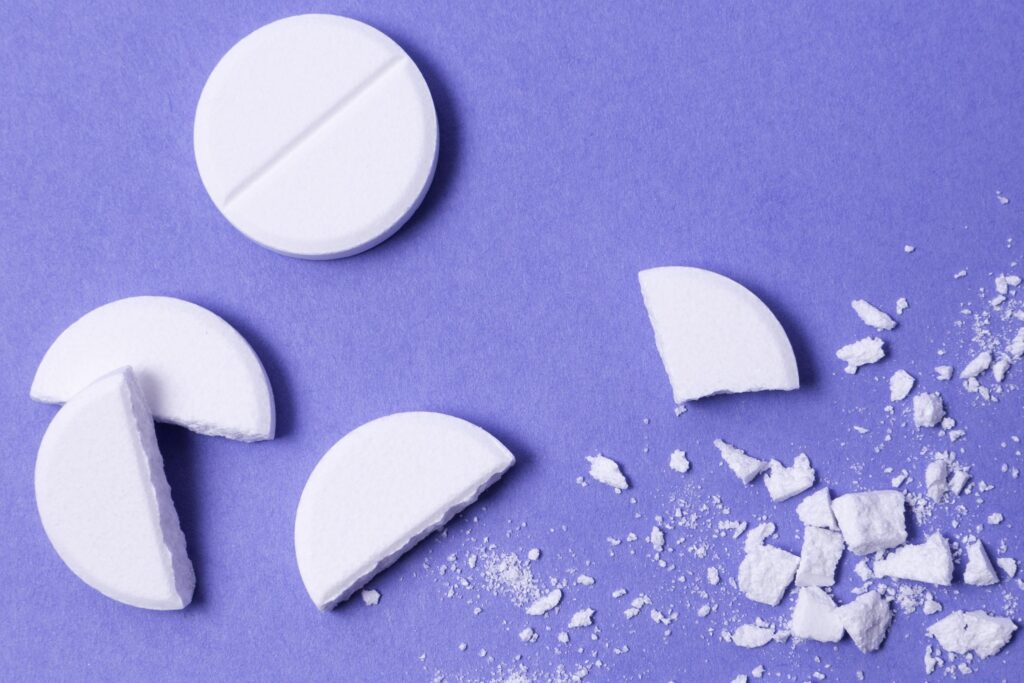Molly vs Ecstasy – Discover the Difference

Key Points
- Molly and Ecstasy both contain MDMA but differ in purity and form.
- Molly is often perceived as a purer version of MDMA, but it can still be adulterated.
- Ecstasy tablets frequently contain other substances, increasing the risk of harmful effects.
- MDMA affects serotonin, dopamine, and norepinephrine, leading to mood elevation and increased energy.
- Short-term risks include dehydration, hyperthermia, serotonin syndrome, and cardiovascular issues.
- Long-term use may lead to neurotoxicity, cognitive impairments, and psychological dependence.
- MDMA is classified as a Schedule I drug with strict legal penalties.
- Harm reduction strategies include hydration management, environment control, and testing kits.
Molly Vs. Ecstasy
MDMA (3,4-methylenedioxymethamphetamine) is a synthetic psychoactive substance that has gained significant attention in both recreational and clinical contexts. Commonly known by its street names, “Molly” and “Ecstasy,” MDMA is celebrated for its euphoric and empathogenic effects. However, understanding the distinctions between Molly Vs Ecstasy as well as the associated risks, is crucial for informed decision-making and public health awareness. This article explores their differences, mechanisms of action, health risks, legal status, harm reduction strategies, and treatment options.
Defining MDMA, Molly, and Ecstasy
MDMA is the chemical compound that serves as the active ingredient in both Molly and Ecstasy. While these terms are often used interchangeably, they refer to different forms and purities of the substance:
- Molly: Typically refers to MDMA in its purest form, presented as a crystalline powder or capsules. The name “Molly” is derived from “molecular,” emphasizing its unadulterated state. Users often perceive Molly as a safer alternative due to its purported purity. However, research shows that even Molly is frequently adulterated. [1]
- Ecstasy: Generally denotes MDMA in tablet form. These pills are frequently mixed with other substances, which can range from inert fillers to harmful additives. The presence of these unknown compounds increases the unpredictability and potential dangers of Ecstasy. [2]
Historical Context and Popularity
MDMA was first synthesized in the early 20th century, but it wasn’t until the 1980s that it gained prominence as a recreational drug. Its ability to induce feelings of euphoria, emotional closeness, and enhanced sensory perception made it a staple in nightclub and rave cultures. Despite its illegal status, MDMA continues to be popular among various demographics, particularly young adults. A significant resurgence of MDMA use has been noted in music festivals and party scenes in recent years. [3]
Mechanism of Action
MDMA primarily affects the brain’s neurotransmitter systems. Upon ingestion, it increases the release of serotonin, dopamine, and norepinephrine, leading to:
- Elevated Mood: The surge in serotonin contributes to feelings of happiness and well-being.
- Increased Energy: Enhanced dopamine release results in heightened alertness and energy levels.
- Emotional Connectivity: Users often report intensified feelings of empathy and closeness to others, attributed to the combined effects on serotonin and oxytocin pathways.
- Reduced Anxiety: Some studies suggest MDMA can lower fear responses, which has sparked interest in its therapeutic potential for PTSD patients.
Purity and Adulteration Concerns
A significant risk associated with MDMA use is the variability in purity, especially concerning Ecstasy tablets. Studies have found that many Ecstasy pills contain little to no MDMA, instead comprising other psychoactive substances such as:
- Amphetamines: Stimulants that can increase heart rate and blood pressure.
- Ketamine: A dissociative anesthetic with hallucinogenic properties.
- Piperazines: Compounds that can mimic some effects of MDMA but carry their own risks.
- Fentanyl: Increasingly, dangerous opioids such as fentanyl have been found in counterfeit MDMA pills, posing severe overdose risks.
Even substances marketed as pure Molly have been found to contain adulterants, challenging the assumption of safety based on form alone. [4]
Health Risks and Adverse Effects
While some users seek MDMA for its pleasurable effects, it is essential to recognize the potential health risks, which can be both acute and long-term:
Short-Term Risks
- Dehydration and Hyperthermia: MDMA can impair the body’s ability to regulate temperature, especially in hot environments like clubs or festivals, leading to dangerous overheating.
- Hyponatremia: In an attempt to prevent dehydration, some users may consume excessive water, diluting blood sodium levels and causing swelling in the brain.
- Cardiovascular Issues: Elevated heart rate and blood pressure increase the risk of heart-related complications, particularly in individuals with pre-existing conditions.
- Serotonin Syndrome: High doses or repeated use within short periods can cause excessive serotonin release, leading to a potentially fatal condition.
Long-Term Risks
- Neurotoxicity: Chronic use may damage serotonin-producing neurons, leading to lasting mood disorders and cognitive deficits.
- Addiction Potential: While not as physically addictive as some substances, MDMA can lead to psychological dependence, with users chasing the euphoric highs.
- Memory and Learning Impairments: Prolonged use has been linked to difficulties in memory retention and information processing. [5]
Harm Reduction Strategies and Treatment
For individuals who choose to use MDMA despite the risks, harm reduction approaches can mitigate potential dangers. However, the safest option is seeking professional treatment at centers like Maple Moon Recovery. Strategies include:
- Testing Kits: Can help identify MDMA presence and detect some common adulterants.
- Hydration Management: Regular but controlled water intake to prevent dehydration or hyponatremia.
- Environment Control: Taking breaks in cooler areas and avoiding overcrowded spaces can help regulate body temperature.
- Therapy and Counseling: Cognitive-behavioral therapy (CBT) and other therapeutic interventions can help individuals struggling with MDMA dependence.
Molly Vs. Ecstasy FAQs
1. Is Molly safer than Ecstasy?
While Molly is often marketed as the purest form of MDMA, studies show that it is frequently adulterated with other substances. There is no guarantee of safety for either Molly or Ecstasy since both can contain harmful additives. Testing kits can help identify potential contaminants but do not ensure purity.
2. What are the signs of MDMA overdose?
Symptoms of an MDMA overdose include severe dehydration, hyperthermia (overheating), high blood pressure, rapid heart rate, confusion, seizures, and unconsciousness. If someone exhibits these signs, seek emergency medical attention immediately.
3. How long does MDMA stay in your system?
MDMA can be detected in urine for up to 3 days in occasional users and up to a week in frequent users. It remains in blood for about 12 to 24 hours and in hair for several months. The detection window depends on factors such as metabolism, dosage, and frequency of use.
4. Can MDMA be used safely?
There is no completely safe way to use MDMA, but harm reduction strategies can minimize risks. These include staying hydrated, avoiding excessive doses, testing substances for purity, and using in a safe environment with trusted individuals.
5. Is MDMA addictive?
MDMA is not considered physically addictive like opioids, but it can lead to psychological dependence. Users may develop a habit of frequent use to chase the euphoric effects, which can lead to negative mental health impacts and withdrawal symptoms such as depression and fatigue.
Maple Moon Recovery: Comprehensive Treatment for MDMA Addiction
At Maple Moon Recovery, we understand the challenges that come with MDMA addiction. Our evidence-based treatment programs provide the support needed to break free from substance dependence and regain control of life.
Our Approach to MDMA Recovery
- Personalized Treatment Plans – Each client receives a customized recovery plan that addresses their specific needs, including detox, therapy, and long-term care strategies.
- Medical Detox – We offer medically supervised detoxification to safely manage withdrawal symptoms and ease the transition into recovery.
- Cognitive Behavioral Therapy (CBT) – Our licensed therapists provide structured counseling to help patients identify and change harmful thought patterns related to substance use.
- Group & Individual Therapy – We provide a balanced approach that includes both individual sessions for personal growth and group therapy for peer support.
- Holistic Healing – We incorporate holistic therapies such as yoga, mindfulness, and nutritional counseling to support overall well-being.
Take the First Step Toward Recovery
If you or a loved one is struggling with MDMA addiction, now is the time to seek professional help. Early intervention is key to preventing long-term health consequences and improving overall quality of life.
🩺 Professionally Reviewed by:

Citations
For further information and support, refer to:
Share This Post



